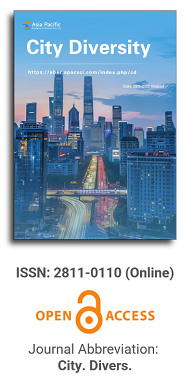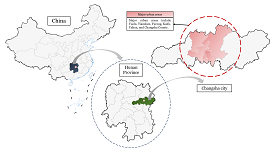
Asia Pacific Academy of Science Pte. Ltd. (APACSCI) specializes in international journal publishing. APACSCI adopts the open access publishing model and provides an important communication bridge for academic groups whose interest fields include engineering, technology, medicine, computer, mathematics, agriculture and forestry, and environment.

As China's pillar industry, the property market has suffered a considerable impact in recent years, with a decline in turnover and many developers at risk of bankruptcy. As one of the most concerned factors for stakeholders, housing prices need to be predicted more objectively and accurately to minimize decision-making errors by developers and consumers. Many prediction models in recent years have been unfriendly to consumers due to technical difficulties, high data demand, and varying factors affecting house prices in different regions. A uniform model across the country cannot capture local differences accurately, so this study compares and analyses the fitting effects of multiple machine learning models using February 2024 new building data in Changsha as an example, aiming to provide consumers with a simple and practical reference for prediction methods. The modeling exploration applies several regression techniques based on machine learning algorithms, such as Stepwise regression, Robust regression, Lasso regression, Ridge regression, Ordinary Least Squares (OLS) regression, Extreme Gradient Boosted regression (XGBoost), and Random Forest (RF) regression. These algorithms are used to construct forecasting models, and the best-performing model is selected by conducting a comparative analysis of the forecasting errors obtained between these models. The research found that machine learning is a practical approach to property price prediction, with least squares regression and Lasso regression providing relatively more convincing results.
Comparison of ant community composition among three ur-ban habitats: a case study in Nanchong, Sichuan
Vol 3, Issue 1, 2022
Download PDF
Abstract
As an important human-caused disturbance factor, urbanization has significantly changed the structure of natural habitats and influenced the composition of animal communities. The characterisitions of abundant population amount, high spcies diversity, and easy to be collected of ants make these species become excellent models for studying the effects of land-use types on the composition of animal communities in urban areas. In May 2018, ants were sampled from 3 land-use types (‘garden and greenland’, ‘dry farm’ and ‘woodland’) using pitfall traps in an urban area of Nanchong city, Sichuan province. A total of 1 847 ant individuals were collected. The proportion of Tetramorium tsushimae was the highest in ‘garden and greenland’ (73.80%), and significantly higher than that of Monomorium chinense in ‘dry farm’ (25.48%) and Pheidole nodus in ‘woodland’ (28.79%). There was no significant difference in the number of indiviuduals and species richness among the 3 habitats, but the Simpson diversity index and Pielou evenness index of ant community in the habitat of‘garden and greenland’were significantly lower than those in the habitats of‘dry farm’and‘woodland’; the composition of ant community in‘woodland’was moderately different from that in‘garden and greenland’(q = 0.444)and‘dry farm’(q = 0.500), and the community composition in‘garden and greenland’and‘dry farm’(q = 0.647)was moderately similar. Therefore, the compositions of ant communities are varied in different land-use types in urban areas, and the habitat of ‘garden and greenland’ is more likely to facilitate the formation of dominant species than ‘dry farm’ and ‘woodland’.
Keywords
References
- Cao Y. Application of Sample Circle Method in Forestry Planning Survey and Design. Inner Mongolia Forestry Survey and Design. 2006; 29(2): 39-40.
- Chen Y. Studies on the phylogeny and DNA barcode of 16 species of Ants in China [Master’s thesis]. Guangxi: Guangxi Normal University; 2014.
- Guo X, Lin Q, Cui J, et al. Species diversity and spatial distribution pattern of ants in tea gardens in Chongqing. Chinese Journal of Ecological Agriculture. 2014; 22(5): 585-593.
- Huang J, Hu G, Yuan J, et al. 2013. Comparison of trap method and Winkler method in investigating soil arthropod diversity: Take the enclosed habitat of Qiandao Lake islands as an example. Journal of Applied Insects. 2013; 50(6): 1679-1691.
- Li Q, Lu Z, Zhang W, et al. Ant communities on the surface of artificial forests in the dry hot valley of the Jinsha River. For-estry Science. 2015; 51(8): 134-142.
- Li Q, Tu J, Xiong Z, et al. Review of arthropod bioindication research. Journal of Northwest Forestry University. 2011; 26(4): 155-161.
- Li S, Xu Y. Comparison of Ant Genome DNA Extraction Methods. Jiangsu Agricultural Sciences. 2010; (1): 50-51.
- Li Y, Zhang J, Bai W, et al. Composition and biodiversity characteristics of insect communities in green spaces with differ-ent functions in Beijing. Journal of Ecological Environment. 2018; 27(6): 1044-1051.
- Liu X, Xu Z, Yu N, et al. Study on ant communities in Galongla and Motuo valleys in southeast Tibet. Forestry Science Re-search. 2017; 30(1): 34-40.
- Mei X, Xu Z, Zhang J, et al. Study on ant species diversity on the east slope of Kunming Xishan Forest Park. Forestry Sci-ence Research. 2006; 19(2): 170-176.
- Meng X, Ouyang Z, Cui G, et al. Plant species composition and distribution char-acteristics of Beijing urban ecosystem. Journal of Ecology. 2004; 24(10): 2200-2206.
- Si J, He Y, Wang L, et al. Relationship between AM infection and nitrogen and phosphorus content in roots of different functional plants in karst habitats. Journal of Chongqing Normal University (Natural Science Edition). 2019; 36(1): 107-115.
- Song Y, Gao C. Comparative study on the investigation methods of small class stock of plantation in South China. Jiangsu Forestry Science and Technology. 2002; 29(4): 14-15.
- Sun X, Zheng G. The impact of human activities on the diversity of surface arthropods—A case study of surface spiders in Beiling Park, Shenyang. Sichuan Zoology. 2012; 31(3): 402-405.
- Tan S, Wei H, Liu D. Similarity analysis of ants fauna and community in residential yards in Chengdu. Journal of Environ-mental Insects. 2010; 32(1): 11-19.153.
Supporting Agencies
Copyright (c) 2022 Xinyu Luo, Zhaomin Zhou
License URL: http://creativecommons.org/licenses/by/4.0/

This site is licensed under a Creative Commons Attribution 4.0 International License (CC BY 4.0).

Prof. Mehmet Cetin
Kastamonu University,
Turkey
Polish Scientific Bibliography

